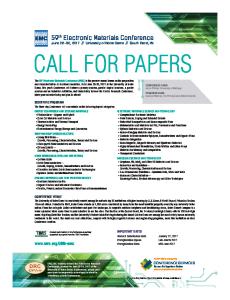Synthesis, Structure and Magnetic Properties of Monoclinic Nb 12 O 29
- PDF / 238,794 Bytes
- 5 Pages / 595 x 842 pts (A4) Page_size
- 53 Downloads / 275 Views
Synthesis, Structure and Magnetic Properties of Monoclinic Nb12O29 J. E. L. Waldron1 and M. A. Green1,2,* 1. Royal Institution of Great Britain, 21, Albemarle Street, London. W1X 4BS. U. K. 2. University College London, 20 Gordon Street, London. WC1H 0AJ U. K.
ABSTRACT The synthesis, structure and magnetic properties of monoclinic Nb12O29 are described. The synthesis of a pure bulk sample is difficult due to the large number of other similar phases. It is achieved by rapid reduction of H-Nb2O5 with Nb metal. The compound is shown to undergo a charge ordering transition at low temperature which provokes long range magnetic order in an intriguing one dimensional arrangement.
INTRODUCTION Reduced d0 oxides of early transition metal oxides often eliminate point defects by the formation of crystallographic shear planes, which creates a wide range of structures over a small range of oxidation states. Nb12O29 has a crystallographic shear structure composed of (3 x 4 x ∞) blocks of corner shared NbO6 octahedra. These blocks can be connected to one another by edge sharing octahedra in two ways producing a monoclinic or an orthorhombic polymorph.[1] Extensive electron microscopy work has been done on Nb12O29, and other crystallographic shear structures, giving detailed information about their defects and stacking faults.[2,3] In contrast, very little is known about their electronic properties. This is primarily due to the difficulty in producing bulk samples of sufficient quality and quantity for measurement. Monoclinic Nb12O29 is particularly difficult to isolate as the orthorhombic polymorph seems to be energetically more favourable. Indeed, the only bulk property measurement reported on the monoclinic polymorph is a X-ray diffraction study performed on a twinned crystal.[1] Orthorhombic Nb12O29 has been reported to be metallic down to low temperature as well as containing localised electrons that show anti-ferromagnetic ordering at 12 K.[4] Here, we describe the synthesis in detail of a bulk sample (>5 g) of monoclinic Nb12O29 by rapid reduction of H-Nb2O5 using Nb metal and briefly describe its structure and electronic properties.
GG4.5.1
EXPERIMENTAL H-Nb2O5 was formed by heating the commercially available Nb2O5 for 12 hours at 1100°C. Stoichiometric amounts of H-Nb2O5 and Nb metal were ground, pelletised and sealed in a quartz tube evacuated to 5 x 10-6 Torr. The reaction time and temperature required is dependent on the sample mass and is described below. Powder X-ray diffraction was carried out with a Siemens D500 diffractometer equipped with a primary monochromator giving Cu Kα1 radiation (λ=1.54056 Å). Magnetic susceptibility measurements were performed with a Quantum Design MPMS7 magnetometer. Conductivity measurements were performed with a Oxford Instruments Maglab 2000 system.
SYNTHESIS Commercially available Nb2O5 contains a large number of polymorphs. H-Nb2O5 is the high temperature phase and it was obvious that formation of Nb12O29 was aided by its presence. This can be rationalised on inspection of the
Data Loading...











